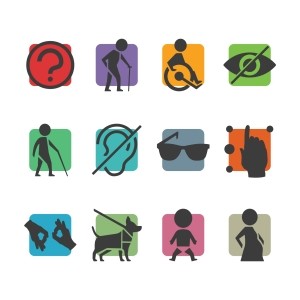
Universal Design makes things safer, easier and more convenient for everyone.
Universal Design involves designing products and spaces so that they can be used by the widest range of people possible. Universal Design evolved from Accessible Design, a design process that addresses the needs of people with disabilities. Universal Design goes further by recognizing that there is a wide spectrum of human abilities. Everyone, even the most able-bodied person, passes through childhood, periods of temporary illness, injury and old age. By designing for this human diversity, we can create things that will be easier for all people to use.
Who Does Universal Design Benefit?
Everyone.
Universal Design takes into account the full range of human diversity, including physical, perceptual and cognitive abilities, as well as different body sizes and shapes. By designing for this diversity, we can create things that are more functional and more user-friendly for everyone. For instance, curb cuts at sidewalks were initially designed for people who use wheelchairs, but they are now also used by pedestrians with strollers or rolling luggage. Curb cuts have added functionality to sidewalks that we can all benefit from.
What can be Universally Designed?
Everything.
- Universal Design can apply to anything that can be designed, including products like door handles, kitchen utensils and smartphones.
- Universal Design can be applied to architecture and the built environment, including public and commercial buildings, as well as residential buildings and family homes.
- Universal Design can also be applied to the community at large through urban planning and public transportation.
Universal Design vs. the Americans with Disabilities Act
The Americans with Disabilities Act (ADA) is a piece of legislation that protects the civil rights of people with disabilities by ensuring that they are not unfairly denied access to job opportunities, goods or services due to their disability. The ADA includes the 2010 ADA Standards for Accessible Design, which outlines accessibility requirements for buildings and facilities. There is a great deal of overlap between what is required under the ADA and what would be suggested by Universal Design, but there are also differences. The ADA outlines the bare minimum necessary in order to curb discrimination against people with disabilities, while Universal Design strives to meet the best practices for design, which are always evolving and improving as we continue to learn more about how to best meet people’s different needs. The ADA focuses solely on the civil rights of people with disabilities, while Universal Design is designed with everyone in mind. The ADA does not apply to single family residences, while Universal Design can and should.
Below are some examples of universal designs:
Low Force Flooring Materials
There is actually a reason that short, stiff carpets and hard surface floors are found in most public buildings. If you use a wheelchair, you know how difficult it can be to push through even slightly plush carpet. Wheelchairs, handcarts, strollers – they are all easier to operate on hard surfaces.
Seamless Room Transitions
Room thresholds are most common in transitions between areas of carpeting and hard surfaces, and those lips can be not only difficult, but painful to maneuver over. Sticking to a consistent flooring style and removing those thresholds can make a huge impact on ease of maneuvering an interior.
Access for Pools
An hour of freely moving around in the water gives people with severe arthritis, muscle atrophy, and more a way to recover and live a significantly more pain-free life. This is why an increasing number of public pools have accessible chairs on metal arms by the side of the pool.
Lever Handles Instead of Knobs
Knobs, while being visually more appealing, require quite a bit more arm and wrist torque to move the bolt. Lever handles require both less force and overall motion.
Close Captioning/Large Print
Tablets, eReaders, smartphones, and more have shortcuts to increase font size easily – another great example of subtle universal design. This is the same principle behind why Netflix, YouTube and others alike now have captioning built in. Disability or not, these features can make life easier.
